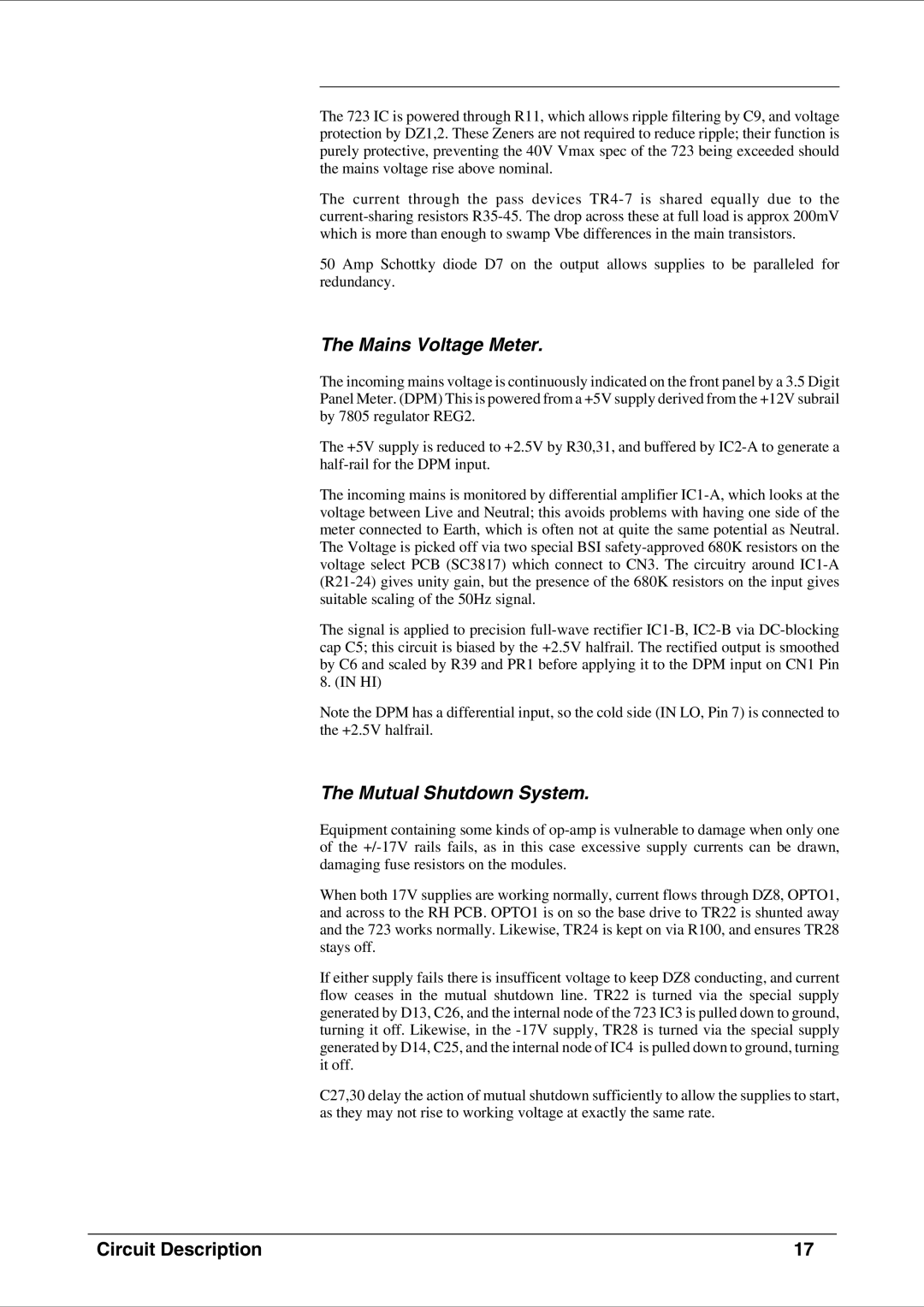
The 723 IC is powered through R11, which allows ripple filtering by C9, and voltage protection by DZ1,2. These Zeners are not required to reduce ripple; their function is purely protective, preventing the 40V Vmax spec of the 723 being exceeded should the mains voltage rise above nominal.
The current through the pass devices
50 Amp Schottky diode D7 on the output allows supplies to be paralleled for redundancy.
The Mains Voltage Meter.
The incoming mains voltage is continuously indicated on the front panel by a 3.5 Digit Panel Meter. (DPM) This is powered from a +5V supply derived from the +12V subrail by 7805 regulator REG2.
The +5V supply is reduced to +2.5V by R30,31, and buffered by
The incoming mains is monitored by differential amplifier
The signal is applied to precision
Note the DPM has a differential input, so the cold side (IN LO, Pin 7) is connected to the +2.5V halfrail.
The Mutual Shutdown System.
Equipment containing some kinds of
When both 17V supplies are working normally, current flows through DZ8, OPTO1, and across to the RH PCB. OPTO1 is on so the base drive to TR22 is shunted away and the 723 works normally. Likewise, TR24 is kept on via R100, and ensures TR28 stays off.
If either supply fails there is insufficent voltage to keep DZ8 conducting, and current flow ceases in the mutual shutdown line. TR22 is turned via the special supply generated by D13, C26, and the internal node of the 723 IC3 is pulled down to ground, turning it off. Likewise, in the
C27,30 delay the action of mutual shutdown sufficiently to allow the supplies to start, as they may not rise to working voltage at exactly the same rate.
Circuit Description | 17 |
